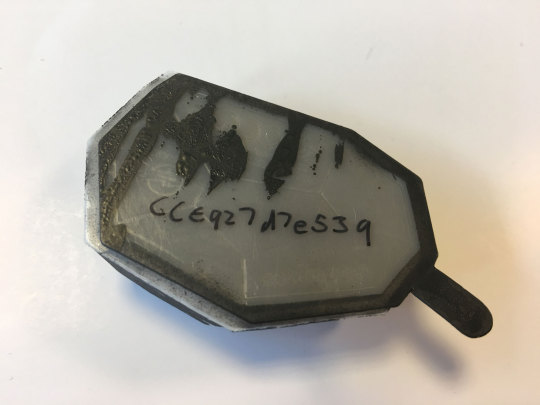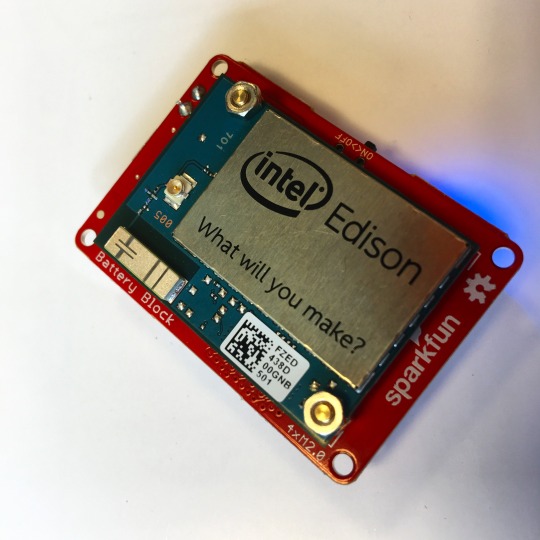anthony galvin
Do you still write code?
Some thoughts on technical leadership and coding.
The other day someone in the team asked me if I still write code. Which got me thinking about how, especially in agency land, senior technologists often don’t. Faced with the growing need for Technical management and client facing technologists, many larger digital agency environments have a fork in the road where people can pursue a less hands on route.
Over the years I’ve worked with lots of senior folks who continue to be practitioners. People from an engineering background who are still, at least some of the time working with software. This isn’t unusual in other fields - nobody expects the top brain surgeons to do all the operations, but they are expected to do some. The same is true for lawyers and in agency land often true for strategists and UX / design folks.
That’s not to say that management and leadership aren’t skills in themselves, skills that require practice and a significant time commitment. As an engineer the way you scale and produce a better output is (or at least should be) by having a team. The team is your unit of awesome.
There’s code, and then there’s code. On the projects I’m involved in the amount of real technical output I contribute varies significantly. Often the things I’m doing are prototypes, setting a direction - more like someone doing a sketch that communicate an approach or a style. It’s not about being ‘the best developer’, firstly because defining best is difficult (fastest, fewest bugs, most code, least code, best collaborator etc..) and also because that’s probably not your role on the project.
Sometimes it’s just about chipping in with a bug fix, picking up a few tickets and helping when the deadline is looming and JIRA is looking a bit unpleasant. It’s fairly unlikely that I’m going to be picking up lots of dev work across any of my client work, but it is an aspect of how I go about solving problems in my day-to-day work.
That’s not to say it’s easy to stay on top of the ever changing technology landscape, but for me it’s not a binary choice between management and coding. They are part of the dynamic of technical leadership, and it’s important that you make time to develop your skills in both areas.
2017-11-15 14:47:11 GMT permalink

Once more. With feelings.
Back to the “inner isles” (Na h-Eileanan a-staigh) for our summer trip. Some new islands this year. But the same objectives: Immersing ourselves in landscape and history. Exploring beaches. Scanning the horizon for the wildlife (this time including Basking Sharks).
Each time we go back to these islands the connection gets stronger. Our collective Islomania intensifies.
3 weeks, 1500 miles driving, 5 Scottish Islands (Coll, Tiree, Mull, Ulva, Bute) and 11 ferries. Happiness.
2017-09-11 20:22:59 GMT permalink
Adventures with Voice Interfaces
Recently I’ve been doing lots of work with voice interfaces. Globally AKQA has been working with clients on VI since it started to go mainstream, and in the UK we’ve helped Jamie Oliver and Arsenal get onto the Amazon Echo platform.
VI is also a lens to use when looking at system or service and figuring out what an MVP really is. By it’s nature VI is a paired back user experience - so if you have an experience that works well for voice users then you probably have a good idea of your core use cases.
From a technology perspective it also starts to place some new demands on engineers. It forces technical teams to think differently about infrastructure, code and server less at scale. The separation between code and infrastructure can get messy when working with AWS Lambda (and similar services), so it’s extra important to focus on code and build pipelines for anything but the most trivial use cases.
Developing for voice also highlights something I think is increasingly important for engineers - the ability to bring service design thinking into software / sprint planning. There’s an increasing overlap between writing software that doesn’t have dead ends and handles exceptions well, and managing the user through options and occasions frustrations of voice interfaces.
Test automation, unit and integration tests are even more important than usual (though I’m not sure how much more important you can make these kind of tests!). Manual testing of voice services is slow (you can’t really speed it up), so you need to have good test coverage to have high confidence in your software and for the team to be able to work at a decent velocity.
It’s also important for everyone on the team to spend time using voice services and to understand the emerging design patterns and expectations of regular users. In the early days of television it was apparently common to meet people who appeared on TV shows but refused to own a television set. The same approach won’t work if you’re developing VI. Using an Echo or Google home on a regular basis is the only real way to understand the possibilities and frustrations of voice interfaces.
2017-05-17 14:25:25 GMT permalink

10 winters
Back to Morzine. I remember a springtime visit 10 winters ago, when Richard and Fiona had bought the old barn on the edge of Morzine. I slept on a concrete floor and then Richard and I went up to the top of the Avoriaz and talked about the future. Then we boarded down in the spring sunshine and it didn’t seem real.
Fast forward to 2017 and we are back in the Alps. The sun shone again and this time I’m on chair lifts with my Violet and Hazel. Sitting at the top of the resort looking out over the mountains, still thinking about the future.
2017-04-11 22:15:44 GMT permalink
Self-driving cars: moonshot or beer wagon?
Almost every day there’s some new buzz, hype and occasional factual statement about self driving cars. The intersection (pun intended) of technology, user experience and transport policy is an interesting place.
From a technology perspective it feels like autonomous vehicles could be the equivalent of the space race for our times. As a side effect of getting people on the moon, NASA is also credited with inventing everything from Nike Air to better dentistry. Whilst the self-driving car industry is still in its infancy, innovations in detailed mapping, artificial intelligence, motion detection, capacity planning, battery technology and machine learning (to name but a few) have already started to have a significant impact on the technology we use everyday.
But transport and mobility matter a lot more than as a way to get a more accurate vacuum cleaner. The relationship people have with cars is complicated. Much of what has been written about vehicle ownership, usage and urban planning doesn’t take into account the irrational choices that people make around transport everyday. How autonomous vehicles fit into real world scenarios is going to be complicated, and based on how politicians handle most rapid technology change, I’m not optimistic about how smoothly the polity will adapt.
In many ways the motor car has been one of the most liberating inventions of the past 150 years. If I was so inclined, tomorrow morning I could pile up the car and drive to the South of France (or more likely the west coast of Scotland) with a level of ease and freedom not possible 100 years or so ago. Yet, despite having a car I don’t really self identify as a driver. It’s something I do, but I’m more likely to say I’m a cyclist or walker. But I’m conscious for many people driving is a very important part of their identify, and for some people the self-driving car represents a challenge to the idea of what it means to be human.
As with most complex technology problems, it’s easier to get to grips with them if you start by trying to build your own version. A self-driving car is a bit of a leap, but the next step for the location aware drinks trolley I build last year is probably autonomy. Even if I don’t get as far as a universal product, a beer wagon that can navigate my office is probably a pretty good place to start.
2017-01-30 22:28:23 GMT permalink

The view.
Over the last few years, the view over the fields behind our house has become increasingly important to me. The back fields.
It is in many ways an unremarkable view. Looking out across flat fields of pasture. A power line, a few hedges and trees. Sometimes there’s sheep but more often the fields are empty. In the distance, on a clear day, a glimpse of the Chiltern Hills. Mentmore, the Beacon at Ivinghoe and beyond. There’s certainly more dramatic views.
Sometimes there is a red kite or a green woodpecker. Today it was a pheasant. But more often it’s a small flock of starlings or sparrows that provide the avian entertainment. In the summer months there are swallows. There’s owls as well, but despite my best efforts I haven’t seen them, only heard their cries on the wind.
I’ve been collecting the sunrises over the fields. Which I suppose is also a way of collecting the sky. Big and open here in North Bucks. Soon the sky might be the only thing still visible to us if the plan to turn the fields into houses is approved.
I think of it as my view, though it’s not mine, I’m just an observer. An onlooker. Not a participant. The flocks of sparrows and starlings don’t object to planning applications, though I’m sure they would given the chance.
2017-01-15 00:31:58 GMT permalink
Creating a connected drinks trolley
Most agencies have a Friday drinks routine. At AKQA London there’s a couple of Virgin Atlantic drinks trolleys that do the rounds. Split over 3 large floors, it’s sometimes hard to know exactly when your G&T is going to arrive. To counter this problem we decided to upgrade the drinks trolley.

The CRD team have been adding estimote beacons across the office (15 or so per floor). These give pretty good coverage, more than enough for a drinks trolley tracker. There’s a few ways you could check the location of the trolley, but it made sense to use all those beacons.

To turn the trolley into an IoT device, we used an Intel Edison hooked up to a SparkFun battery pack. The Edison is Intel’s small connected prototyping device. Think an Arduino but with a bit more power and built in WiFi and Bluetooth.
The Edison runs a version of Linux and you can write apps in a variety of languages including node.js. Using the Bleacon library I wrote a simple script that uses the onboard Bluetooth to scan for beacons.
When the Edison finds a known beacon, it calls a service to let it know which beacon is nearby. To keep things simple we are using AWS API gateway and dynamoDB so there’s no server side code to manage. There’s a second endpoint that returns a list of places the trolley has been. We then use this data to populate a simple website to tell people where the trolley is.

It’s a fairly silly application for IoT, but it shows how you can create a proof of concept without lots of infrastructure. The good news is we now know where the trolley is. The bad news is that it doesn’t make it arrive any sooner.

2016-09-16 14:50:38 GMT permalink

On a blazing hot August day we jumped aboard the Island Lass and headed off for a boat trip round the Treshnish Isles, past Fingal’s Cave and onto Staffa.
After spending a few days on Ulva the crowds on the boat and island felt a bit overwhelming to start with. Despite the good weather it was still pretty choppy on the way into the landing at Staffa. It’s hard to imaging the portly Dr. Johnson arriving in 1773.
2016-09-05 21:16:05 GMT permalink













































































































































































































































